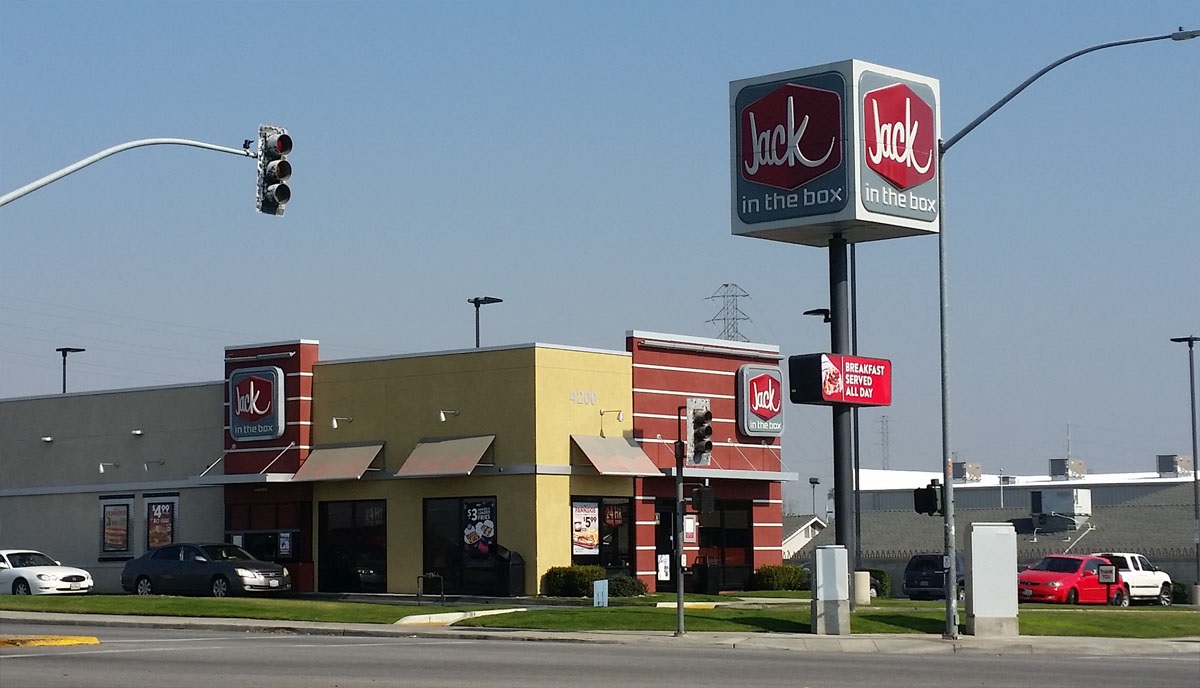Have you ever stopped at a fast food drive through on the way home because you didn’t have time to cook? Did you regret having to serve the less than healthy meal to your family, but felt that you did not have another option? Busy families need better food options. At our house, my wife began doing once-a-month cooking; preparing meals in advance and freezing them, so she could take back some of the time that preparing meals and cleaning up took away from our evenings. It also had the added bonus of eating healthier meals, with a greater variety, for significantly less money.
I asked Carolyn, my wife, to take you through the process of once-a-month cooking so you can glean knowledge from a different Fawcett. This article is geared for whoever is the main cook in your household. So, share it with your spouse if you are not the primary meal preparer. If you are ready for fewer trips to the grocery store, less meal prep time, fewer pots and pans to wash, more time with your family, better food choices, then this article is for you. It just might change your life the way it changed ours. Take it away Carolyn!
When you figure how much time each day is spent preparing and cleaning up after your evening meal, you will find that your evenings will be less rushed and you will eat better, when your freezer is stocked with healthy meals. It feels so great to sit down with my family to have a nice meal that took me very little time to prepare, since the majority of the work was completed several weeks earlier. I can enjoy the evening with my family instead of slaving over the stove.
There are several steps to cooking once-a-month; choose the recipes, make a shopping list, prepare your refrigerator and freezer for cooking day, purchase the food, organize the recipes, prepare the kitchen, cook the food, freeze the dishes, and clean-up.
Choose the recipes
Before cooking day you must choose which recipes you would like to prepare, making sure that each meal you plan to prepare is freezer friendly. I recommend purchasing a once-a-month cookbook to help you find recipes that will freeze well and to guide you through your first once-a-month cooking experience.
I used Once-A-Month Cooking by Mimi Wilson and May Beth Lagerborg. Their revised and expanded version as well as their Once-A-Month Family Favorites cookbook can be found here. The shopping lists, recipes, a step by step order of what needs to be done to prepare the dishes, and the serving instructions are all included in the book. I decided to start with a two week plan. Following the successful two week plan I then did one of their full month plans. Starting with their recipes and step by step plan really helped get me started on the right foot. I discovered which recipes my family liked, and I learned what kind of dishes freeze well.
The next time I did it, I chose recipes both from my once-a-month cookbook and recipes that I had prepared for my family in the past that we like that I felt would be freezer friendly. Choose recipes with varying difficulty. If all your recipes are time consuming to make, like lasagna, you may not finish all the meals in one day. Having some quick prep recipes like teriyaki chicken, where you combine the ingredients for the teriyaki sauce right in the freezer bag, squish them around, and add the chicken, are both delicious and aid in completing all the dishes in a timely fashion.
Make a shopping list
Before shopping day, make a list of all needed items including zip lock freezer bags or whatever storage containers are needed for each of your recipes. Write down each item once and keep a tally to the left of the item of how many you will need. You may have multiple recipes that call for onions, for example. Check to make sure your pantry is equipped with enough of each of the staples and spices that will be needed in each recipe. Add to your shopping list any item that needs replenishing. Group your grocery items based on what the item is: meat, dairy, canned goods, vegetables, etc. so you can find them easily at the grocery store. If you plan to shop at multiple stores, for whatever reason, making a separate list for each store may be helpful.
Prepare your refrigerator and freezer for cooking day
You will need enough room in your refrigerator, or you can use a cooler, to hold the food that needs refrigeration. Your freezer will need space to store all the meals you have prepared. Take out bread and anything else that doesn’t have to be in the freezer to acquire more room. Make sure you eat all the ice cream, and any other item that could melt. Adding a large quantity of unfrozen food into the freezer on cooking day will increase the temperature in the freezer. Ice Cream that has been melted and refrozen isn’t very good.
Purchase the food
The day before cooking day is the best day to purchase the food. If you have small kids, leave them home with your spouse, grandma or a friend. You will want to have your full attention on shopping, and there won’t be room in your cart for kids. Take advantage of both sales and buying in bulk. This is just one of the ways once-a-month cooking saves money.
Organize the recipes
Organizing the recipes is a key step in saving time on cooking day. I like to make a photocopy of each recipe so I can easily put the recipes in the order I plan to prepare them. These printed copies can also be easily taken to whichever prep spot you need. Spilling something on the recipe is not a big deal since the recipes will be tossed when you finish.
First, group your recipes by type of meat. You will be preparing all the recipes in one group before moving on to the next group. I like to start with either the beef recipes or the pork recipes, and I always end with the chicken recipes. By preparing all the same meat type together, cross contamination will be eliminated.
Next, order the recipes in each meat group by placing like dishes following each other. For example, after making your spaghetti sauce, use the same pot to prepare your taco meat, followed by your tomato based soup. One of the ways that making many dishes consecutively decreases meal prep time is by not washing the pots and utensils between each dish. Since the key ingredients are the same in these dishes, there is no need for extra washing, as you would if you just made one meal each night for dinner.
Prepare the kitchen
Preparing the kitchen the night before saves time and gives you a quicker start to your cooking day. Start by cleaning off your kitchen counters of everything you will not be using on cooking day. Appliances, potted plants, decorations, etc. will only take up precious counter space. Choose a spot near the stove to have all the items that were purchased that don’t need refrigeration. Organize your “pantry” so each item can be found easily. There is no need to put your groceries away when you will be using them the next day. Set up your food processor, putting the onions and any other vegetable that doesn’t need refrigeration, next to the food processor. Set out large pots, measuring cups and spoons and any other kitchen tools needed for easy access. Find a place for the freezer bags, and a permanent marker to label the bags, and the containers that the food will be put in before going into the freezer.
Cook the food
Plan to start early on cooking day. I usually start at 8 AM. Start your cooking day by slicing and dicing all the vegetables and shredding the cheese. A food processer is great for dicing the onions, carrots, celery, shredding cheese, etc. It saves a lot of time to do all the like preparation jobs at the same time. When it is time to prepare a dish there will be no need to stop and cut an onion. Just grab a measuring cup and measure the amount you need. One cup of chopped onion is about one medium onion. Having the sous-chef work completed in advance, enables assembling the recipes to go more quickly.
Now it is time to start your first meal. Since you have already established what order you will be preparing the recipes, take the first recipe and begin cooking. After completing the dish make sure it has cooled before placing it into the freezer. Use your dining room table as the space for cooling.
Continue down your pile of recipes. When you change to a different meat category, that’s a good time to stop and wash a few dishes. Keep the sink full of soapy water for your quick washes. I let the dishes drain or just reuse them without drying them. A little water won’t hurt. Keep taking recipes from the top of the pile until you finish your last one.
Freezing the dishes
Some of the recipes can be frozen in zip-lock freezer bags which take up little room and can be stacked easily. They can even be squished into whatever shape is needed to fit into awkward spaces. Write the recipe name and the date on each bag before adding the food. Simple cooking instructions can also be added. Marinades, spaghetti sauce, chili, and soups are examples of foods that freeze well in freezer bags. Make sure that all the air is out of the freezer bag.
Casseroles, like lasagna, need to be frozen in the baking dish that they are prepared in. Line the baking dish with heavy aluminum foil before preparing the casserole. Put foil on the top, label by writing on the foil and freeze. After the casserole is frozen, the baking dish can be removed from the freezer to free up space or to be used for something else. When you take this casserole from the freezer, put it back into the same baking dish to thaw. Clean up will be easy having the dish lined with foil.
Flash freezing works well for things like burritos and meat balls. First, lay the food, in a single layer, not touching each other, on a cookie sheet and place flat into the freezer. Once frozen, put them in zip-lock freezer bags and place back in the freezer. Flash freezing will keep them from sticking together in the freezer bag and you will be able to take as many individual items as you need without thawing all of them in the bag.
Make sure the food has cooled before placing in the freezer. Freezing lots of food all at the same time will take a while and may start to thaw other food that is already frozen. Expect the freezer to run constantly for about a day while the meals freeze solid.
Clean-up
You don’t need to save all the clean-up until all the cooking is complete. There are times throughout the day, between occasional stirs or between meat groups that you can take a few minutes to wash some dishes or clean a work area.
Serving
The night before you plan to eat a frozen meal, move the meal to the refrigerator. The next day, follow the instructions for cooking or reheating the meal.
Bonuses
After I had done once-a-month cooking a few times I was invited to a baby shower for one of my friends. She was having her third child. Since she already had a girl and a boy, she didn’t need the usual baby necessities. The gal who was giving the shower was encouraging everyone to give practical gifts, like disposable diapers. That got me thinking about what I would have liked if I were in her shoes.
I decided to give her 15 freezer meals. I made 15 different meals times two. One for her family and one for mine. She loved the gift, and I realized how much faster and easier it is to make two of each thing rather than 30 different things.
When her baby turned three months old she asked if I would teach her how to do once-a-month cooking, so we did it together. She came over to our house and we each worked on the 30 meals time two. Making the meals with a friend was not only more fun, but it was also faster. Each of us made 15 meals times two, so at the end of the day we each had 30 different meals.
After that experience I have enjoyed once-a-month cooking with many other women. Having meals in the freezer has been a blessing. Even though this style of cooking is meant to be done monthly, we don’t eat all the meals in a month’s time. Sometimes I want to make something special for dinner, or I’m in the mood for a particular thing that isn’t in the freezer, and occasionally we eat out or eat at a friend’s house. To avoid spending a whole day cooking, I will often make a double or triple batch of something. Eat a portion for dinner and freeze the rest in one or two meal portions. If I find a good deal at the grocery store on an item, like chicken, and I have the time to cook a few dishes, I will purchase enough chicken to make several meals to add to my freezer.
Having meals in the freezer relieves the pressure of trying to come up with a different meal every night, saves money on our grocery bill, from buying in bulk, and allows us to make fewer trips to the grocery store, which reduces the temptation to overspend. A freezer meal can be served to company, or taken to a friend who just had surgery with very little effort. It also comes in handy to fill the freezer in the motor home when we go camping. Once-a-month cooking has given us the ability to eat out less, which is also a money saver, have a bigger variety of dishes, and eat healthier non-fast food meals.









